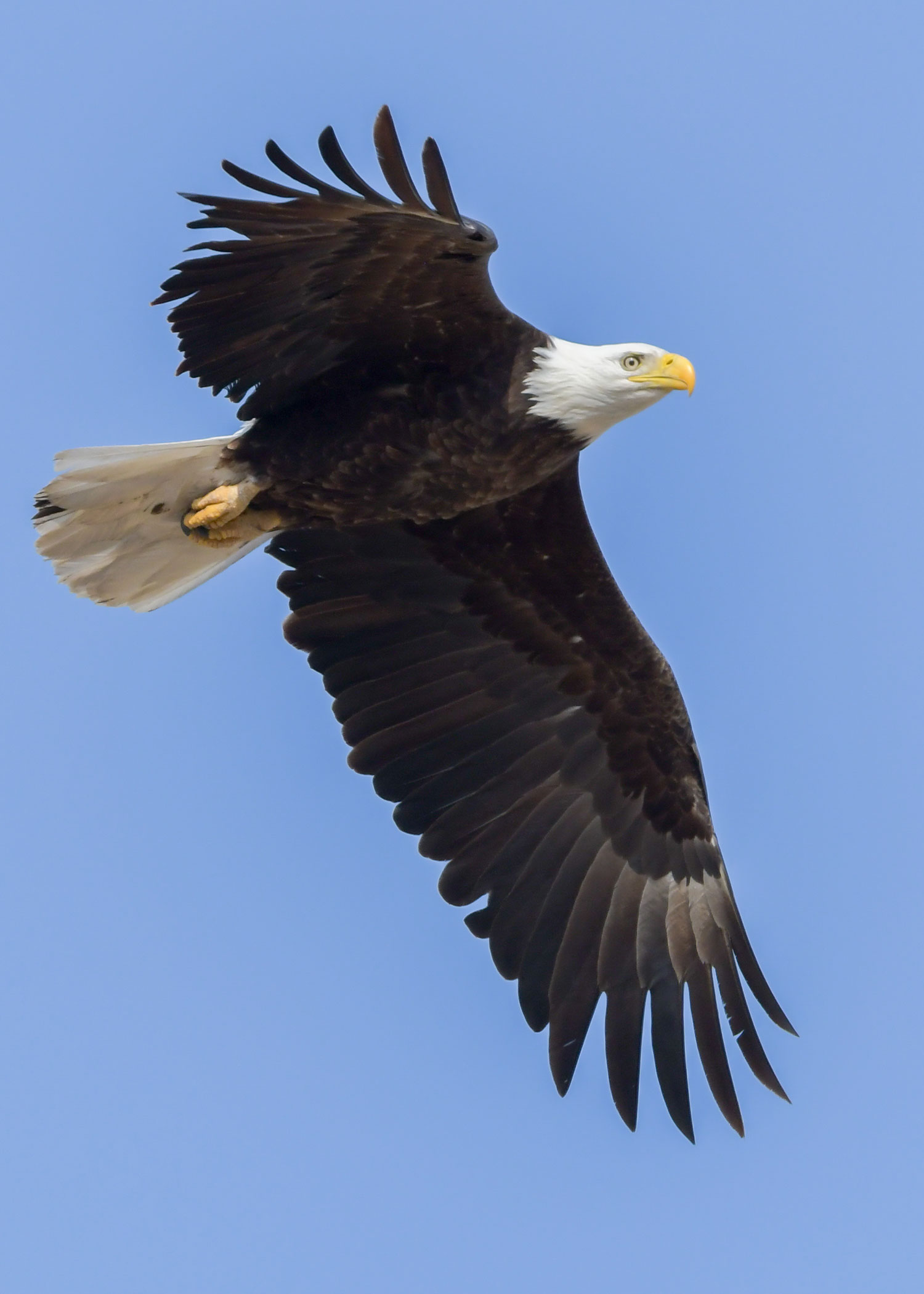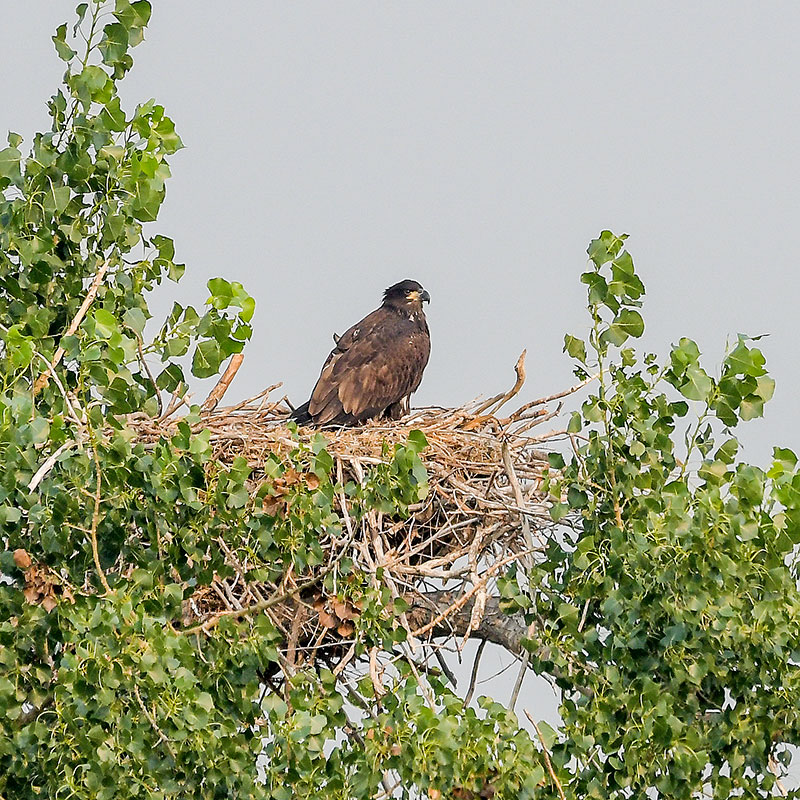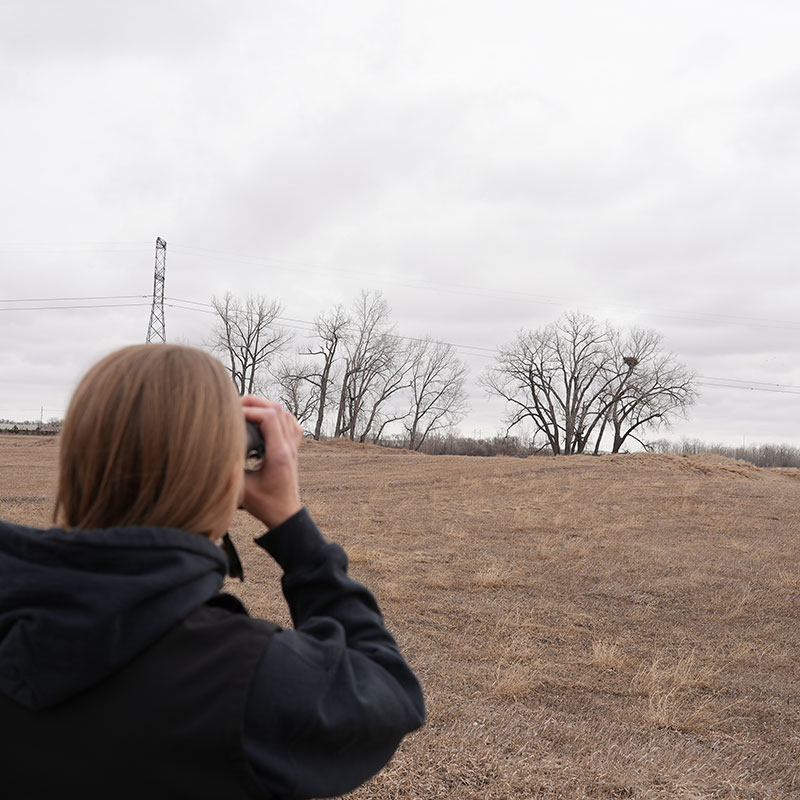Soaring Out of Obscurity
Ron Wilson

When a McLean County landowner discovered an occupied bald eagle nest along the Missouri River nearly four decades ago, it was news.
Before that day, it had been 12 years since a pair of adult eagles successfully nested and fledged an eaglet in the state.
“The nest was first discovered in mid-June … the historic event was later documented by a Fish and Wildlife Service biologist and Army Corps of Engineers personnel while surveying the Missouri River between Garrison Dam and Bismarck for the federally endangered least tern and threatened piping plover,” according to an article in North Dakota OUTDOORS in November 1988. “Two adult bald eagles, and one fully feathered eaglet were observed perching amidst towering cottonwoods along the riverbank.”
Once a common sight, bald eagles were severely affected in the mid-20th century by a variety of factors, among them the thinning of eggshells attributed to use of the pesticide DDT. The bald eagle was placed on the endangered species list in 1978 and remained there for nearly three decades.
While at the time, discovering a successful eagle nest along the Missouri River didn’t signal the recovery of our nation’s symbol in North Dakota, it was a hopeful and newsworthy start.
“Historically, bald eagles did nest along the Missouri River, Red River and likely the Devils Lake area and the Turtle Mountains,” said Sandra Johnson, North Dakota Game and Fish Department conservation biologist. “When bald eagle populations really declined throughout the 1900s, we didn’t know of many active nests. In the 1970s and 1980s, there were probably fewer than three nests in North Dakota.”
But by the 1990s, they started increasing. By 2010, Johnson said, North Dakota had almost 100 active nests, and by 2020, that number jumped to about 300.
Today, Johnson said there are active nests in 47 of North Dakota’s 53 counties. Yet, there is some speculation the six counties (Williams, Wells, Burke, Billings, Slope and Golden Valley) that didn’t make the list likely harbor active bald eagle nests, but they simply haven’t been reported.
“As Department wildlife biologists, we’re not actively surveying every county,” Johnson said. “We rely heavily on reports from the public and our conservation partners on where nests are at. While I’d guess there has to be an active bald eagle nest in almost every county, but without confirmation, that number stands at 47 today.”
When you envision a bald eagle nest, it’s easy to imagine it, say, along the Missouri River in a gigantic cottonwood that’s seemingly been around forever. Yet, as time has shown, bald eagles have ventured out from our major river corridors into some unlikely places.
“They’ve proven to be quite adaptable, and they will nest in trees out in the middle of pastures, fields, really anywhere they’ve got a food source nearby and it doesn’t necessarily have to be by water, either,” Johnson said. “Nationally, there are some bald eagle nests that are more than 9 miles away from any type of water source. Because bald eagles are one of the top predators, if there is a large tree and a food source, it could potentially be bald eagle nesting habitat.”
Bald eagle nests are often unmistakable because of their size.


